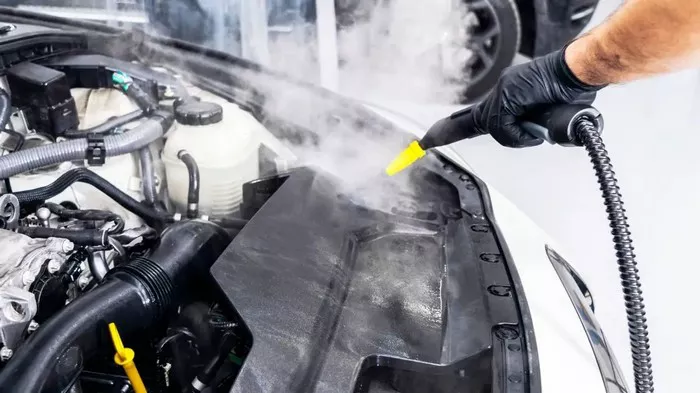Maintaining cleanliness in various settings, whether industrial, commercial, or residential, is essential for safety, health, and aesthetics. To achieve optimal cleanliness, selecting the right sweeping equipment is paramount. In this article, we delve into the importance of choosing the correct sweeping equipment, considering factors such as efficiency, ergonomics, durability, safety, cost-effectiveness, and environmental impact.
Explanation of Different Types of Sweeping Equipment
Sweeping equipment comes in various forms to cater to different cleaning needs. Understanding the differences between these types is crucial for making an informed decision.
1. Manual Sweepers: These are basic sweeping tools operated by hand. They are suitable for small areas with light debris, such as residential driveways, sidewalks, or small businesses. Manual sweepers are cost-effective and require minimal maintenance, making them ideal for light-duty cleaning tasks.
2. Walk-Behind Sweepers: Walk-behind sweepers are propelled by the operator and are more powerful than manual sweepers. They are suitable for medium-sized areas like parking lots, warehouses, and workshops. These sweepers offer improved efficiency and can handle moderate levels of debris with ease.
3. Ride-On Sweepers: Designed for larger areas and heavy-duty cleaning tasks, ride-on sweepers are operated while seated. They are commonly used in industrial settings, large commercial facilities, and outdoor spaces like parking garages and airports. Ride-on sweepers offer high productivity and can efficiently tackle substantial amounts of debris.
Task-Specific Recommendations
The choice of sweeping equipment depends heavily on the nature of the cleaning task at hand. Different scenarios require different capabilities from the equipment used.
1. Light Debris: For cleaning light debris such as dust, dirt, and small particles, manual or walk-behind sweepers are suitable. These tasks are often found in office buildings, retail stores, and residential areas where precision cleaning is required.
2. Heavy-Duty Cleaning: Industrial environments, construction sites, and outdoor areas often accumulate heavy debris like gravel, rocks, and construction waste. In such cases, ride-on sweepers equipped with powerful suction capabilities and large debris bins are necessary to ensure thorough cleaning.
Efficiency and Effectiveness
Selecting the right sweeping equipment is crucial for maintaining efficiency in cleaning routines. Using equipment that is well-suited to the task at hand can significantly streamline the cleaning process and improve overall effectiveness.
Efficient sweeping equipment can cover larger areas in less time, reducing labor costs and increasing productivity. Additionally, effective equipment ensures thorough cleaning, preventing the accumulation of debris that could pose safety hazards or lead to costly damage to property and equipment.
Ergonomics and Ease of Use
Ergonomic design plays a vital role in the usability of sweeping equipment and the well-being of operators. Equipment that is ergonomically designed reduces operator fatigue and discomfort, allowing for longer and more productive cleaning sessions.
Features such as adjustable handles, comfortable seating, and intuitive controls contribute to ease of use and enhance operator satisfaction. Prioritizing ergonomic considerations not only improves the user experience but also reduces the risk of injuries and contributes to a safer working environment.
Durability and Maintenance
Investing in durable sweeping equipment is essential for long-term cost savings and operational reliability. Equipment constructed from high-quality materials and components is more resistant to wear and tear, ensuring prolonged lifespan and minimizing the need for frequent repairs or replacements.
Regular maintenance is also crucial for preserving the performance and longevity of sweeping equipment. Following manufacturer recommendations for maintenance tasks such as cleaning filters, lubricating moving parts, and inspecting for wear and tear can prevent breakdowns and costly downtime.
Safety and Manufacturer’s Guidelines
Safety should always be a top priority when operating sweeping equipment. Adhering to manufacturer’s guidelines for safe operation is essential to prevent accidents, injuries, and damage to property.
Operators should receive proper training on equipment operation and safety procedures to minimize risks. This includes understanding how to safely maneuver the equipment, avoid obstacles, and operate any auxiliary features such as vacuum systems or side brushes.
Cost Considerations
While upfront costs are a significant consideration when purchasing sweeping equipment, it’s essential to look beyond the initial investment and consider the long-term cost implications.
Choosing the right equipment for the job can lead to significant cost savings over time. Equipment that is efficient, durable, and easy to maintain reduces labor costs, decreases downtime, and extends the lifespan of the equipment, ultimately providing a higher return on investment.
Environmental Impact
In an increasingly environmentally conscious world, the environmental impact of sweeping equipment is a crucial consideration. Environmentally friendly equipment helps reduce carbon emissions, minimize waste generation, and conserve natural resources.
Electric-powered sweepers offer a greener alternative to traditional gas or diesel-powered models, emitting fewer pollutants and reducing reliance on fossil fuels. Additionally, features such as regenerative braking and energy-efficient motors further enhance the environmental credentials of sweeping equipment.
Incorporating sustainable practices into cleaning routines, such as using biodegradable cleaning agents and implementing water conservation measures, further reduces the environmental footprint of sweeping operations.
Conclusion
Selecting the correct sweeping equipment is essential for maintaining cleanliness, efficiency, and safety in various settings. By understanding the different types of sweepers available, considering task-specific requirements, prioritizing efficiency, ergonomics, durability, safety, and adhering to manufacturer’s guidelines, organizations can make informed decisions that enhance productivity, reduce costs, and minimize environmental impact. Investing in environmentally friendly sweeping equipment not only benefits the bottom line but also contributes to a cleaner, healthier planet for future generations.

